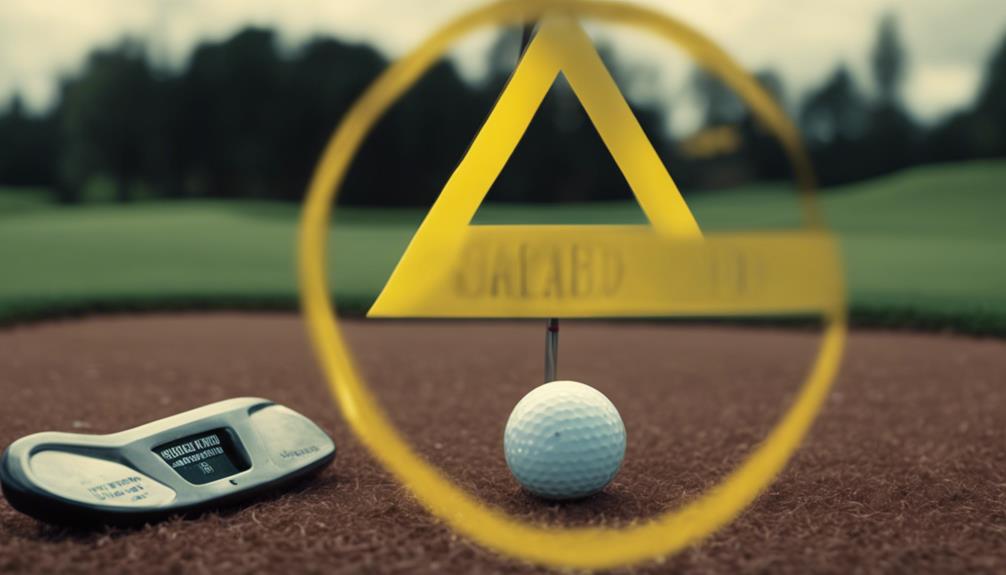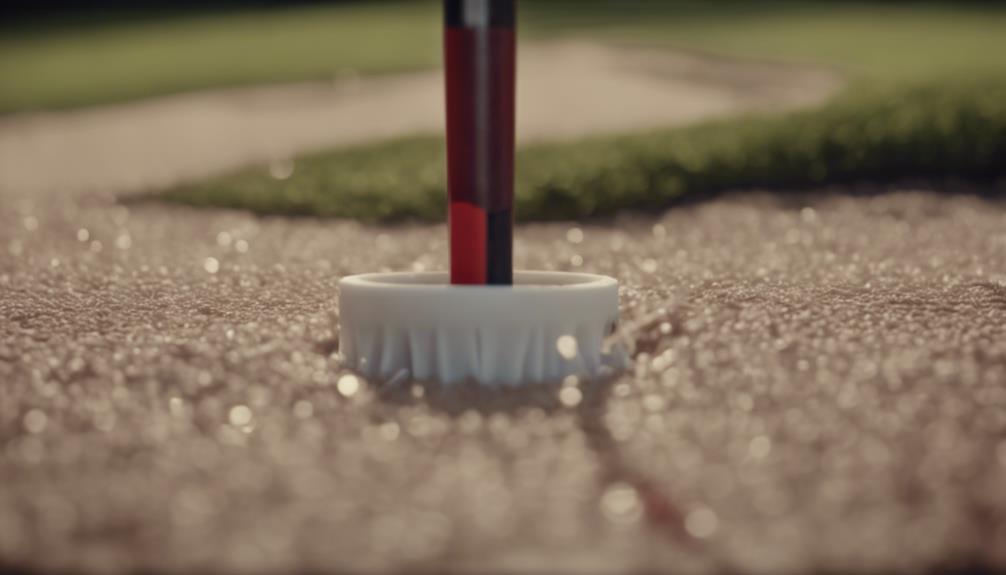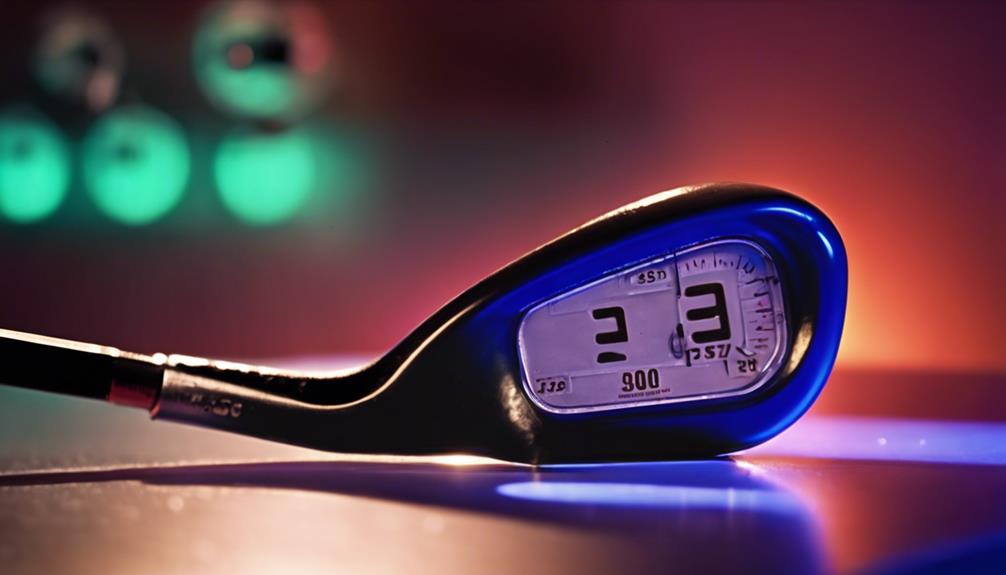- 7 Top Flite Golf Clubs XL for Improved Performance - September 28, 2024
- Top Flite Golf Clubs: Top 5 Reasons to Choose Them - September 28, 2024
- Top 3 Golf Club Fitters for a Perfect Swing - September 28, 2024
You can expect golf club epoxy to take anywhere from 10 minutes to 20 hours to dry, depending on the type of epoxy and environmental conditions. Fast-cure epoxies can dry in as little as 30 minutes, while slow-cure epoxies may take 20-24 hours to fully cure. Temperature, humidity, and epoxy type all impact cure time, so understanding these factors is crucial to achieve excellent results. By grasping the complexities of epoxy curing, you'll be well on your way to ensuring strong, reliable bonds for your golf clubs. Now, learn how to fine-tune your process for outstanding results.
Key Takeaways
- Epoxy cure times vary from 10 minutes to 20 hours, depending on the type and environmental conditions.
- Fast-curing epoxies can dry in as little as 30 minutes, while slow-curing epoxies may take 20-24 hours to fully cure.
- Temperature plays a crucial role, with ideal curing temperatures ranging from 72°F to 80°F, and higher temperatures shortening the curing time.
- Controlling environmental factors like humidity and dust during curing is essential for a strong and reliable bond.
- Proper mixing, application, and curing conditions significantly impact the drying time and overall bond strength of the epoxy.
Types of Epoxy for Clubmaking
When choosing an epoxy for clubmaking, you'll typically come across two main types: slow cure and fast cure, each with its own unique characteristics and benefits.
As a clubmaker, understanding the differences between these two types is crucial to make an informed decision. Fast curing epoxies, in particular, offer several advantages.
For example, they can cure in approximately 30 minutes, which is noticeably quicker than slow cure epoxies that take around 20-24 hours to fully cure at room temperature. This rapid curing time enables you to save time in club assembly and offer a quick turnaround for your customers.
Additionally, fast curing epoxies have higher shear strength, making them a great choice for applications that require strong bonding. By opting for a fast curing epoxy, you can streamline your workflow, increase productivity, and deliver high-quality clubs to your customers promptly.
With these benefits, it's no surprise fast curing epoxies are a popular choice among clubmakers who prioritize speed and performance.
Epoxy Cure Times and Temperature
You'll find that epoxy cure times can vary considerably, ranging from as little as 10 minutes to as long as 20 hours, depending on the specific type of epoxy you're working with. The ideal temperature range for epoxy curing is typically around 72°F to 80°F. Lower temperatures can extend the curing time of epoxy, while higher temperatures can shorten it.
| Temperature | Epoxy Curing Time |
|---|---|
| 60°F | 2-4 hours |
| 70°F | 1-2 hours |
| 80°F | 30 minutes – 1 hour |
| 90°F | 15-30 minutes |
| 100°F | 10-15 minutes |
Understanding the influence of temperature on epoxy curing is essential for efficient and effective clubmaking processes. Fast curing epoxies may cure in as little as 30 minutes, offering quick turnaround for club assembly. By controlling the temperature, you can optimize the epoxy curing process, ensuring a strong and durable bond. Remember, epoxy curing is a vital step in clubmaking, and mastering it will elevate your craft.
Risk Assessment for Epoxy Usage

As you choose an epoxy for clubmaking, weighing the benefits of fast hardening epoxies against the potential risks of bond failures is crucial. While fast hardening epoxies can save you time, they can also result in weaker bonds, compromising the overall performance of your golf clubs. A thorough risk assessment is necessary to make an informed decision.
Most clubmaking shops offer both slow and fast hardening epoxies to meet different needs. When selecting an epoxy, consider the specific situation at hand. If you're dealing with a complex assembly or require additional time for precise alignment, slow hardening epoxies might be the preferable choice. However, if you're pressed for time and need a quick solution, fast hardening epoxies can be appropriate.
To minimize risks, using reputable brands like Dynacraft and Brampton, renowned for their high-quality epoxy products, is crucial.
Shelf Life Considerations for Epoxy
When working with two-part epoxy products, you need to keep in mind the shelf life of the hardener and resin components.
You'll want to guarantee you're using fresh products to avoid bond failures and guarantee peak performance in your golf club repairs.
Now, let's explore the importance of epoxy expiration dates and proper storage tips to get the most out of your epoxy products.
Epoxy Expiration Dates
Before applying two-part epoxy products to your golf club repairs, check the shelf life of both the hardener and resin components to guarantee their effectiveness and best bonding strength. You'll want to make sure both components are within their specified shelf life to avoid any issues with bonding.
Using expired or discounted epoxy can lead to bond failures, which will impact the durability of your club repairs. You should always check the expiration dates or shelf life of the epoxy products before making a purchase. This is important because the shelf life of epoxy significantly influences its bonding strength and reliability.
If you use an expired product, you risk compromising the integrity of your repairs. On the other hand, properly stored epoxy with a valid shelf life will provide consistent and reliable results for your club repairs.
Epoxy Storage Tips
You can greatly extend the shelf life of your epoxy products by storing them in a cool, dry place, away from direct sunlight and heat sources. This is important because epoxy's shelf life directly impacts its bonding strength, and using expired epoxy can lead to bond failures, affecting the quality of your golf club repairs.
To achieve best results, follow these storage tips:
- Store epoxy products in their original containers, tightly sealed to prevent contamination.
- Keep epoxy away from strong chemicals, cleaning products, or other substances that may react with it.
- Monitor the shelf life of both hardener and resin components, as expired products can compromise bonding strength.
- Avoid storing epoxy near heat sources, such as radiators, ovens, or direct sunlight, which can cause degradation.
- Check the shelf life of epoxy products before use to ensure effectiveness and reliability in your golf club maintenance.
Alternative Solutions to Epoxy

When you're in a pinch and epoxy isn't available, you can consider alternative solutions to get your golf club back in action.
You may want to explore the benefits of gel superglue, which can provide a quick temporary fix for minor club issues on the course.
Gel Superglue Benefits
Gel superglue offers a convenient alternative to epoxy for quick, temporary fixes on the golf course, allowing you to address minor club issues promptly. When you're in the middle of a game and don't have epoxy handy, gel superglue can be a lifesaver. It provides a quick solution for minor repairs, giving you the strength you need to get back out on the course.
Here are some benefits of using gel superglue:
- Provides a quick fix for minor club issues, allowing you to get back to your game
- Offers temporary strength until you can get a proper epoxy fix
- Easy to apply and dries quickly
- Ideal for emergency repairs when epoxy isn't available
- Can be used for temporary adjustments until proper epoxy can be applied
Temporary Fix Options
In situations where epoxy isn't readily available, it's worth exploring alternative solutions that can provide a temporary fix for your golf club. Gel-type superglue can serve as a viable option in emergency situations. This type of adhesive is suitable for quick repairs on golf clubs, offering a temporary solution until you can apply proper epoxy.
Here's a comparison of gel superglue and epoxy to help you make an informed decision:
| Adhesive | Cure Time | Purpose |
|---|---|---|
| Gel Superglue | Instant | Temporary fix for minor club issues |
| Epoxy | 24 hours | Permanent bonding for golf clubs |
| Gel Superglue | 10-15 minutes | Quick repairs on the course |
| Epoxy | Not suitable | Emergency repairs |
| Gel Superglue | Cautious use | Temporary solution until epoxy is available |
Emergency Repair Solutions
Your search for emergency repair solutions leads you to alternative adhesives that can save your game, and gel-type superglue is one such option that can provide a quick fix in urgent situations. When you're in the middle of a round and your club suddenly needs attention, gel superglue can be a lifesaver.
Here are some key benefits of using gel superglue for emergency repairs:
- Temporary fix: Gel superglue can serve as a temporary fix for emergency golf club repairs, getting you back in the game quickly.
- Quick adjustments: It's effective for quick adjustments on golf clubs in urgent situations, allowing you to make minor repairs on the fly.
- Minor issues: Gel superglue can be used as a temporary solution for minor club issues on the course, such as loose grips or small cracks.
- Bridge to epoxy: It offers a quick fix until proper epoxy is available for more permanent repairs, ensuring you don't have to sacrifice your game.
- Cautious use: Remember to use gel superglue cautiously and only as a temporary measure until epoxy can be applied for a more lasting solution.
Factors Affecting Epoxy Cure Time
You'll find that several factors greatly influence the epoxy cure time, including temperature, humidity, and the type of epoxy used. For instance, fast-curing epoxies can dry in as little as 30 minutes, while slow-curing epoxies may take 20-24 hours to fully cure.
Temperature plays a substantial role, with best curing temperatures ranging from 140°F to 160°F for faster drying and stronger adhesion. Humidity also affects the cure time, with higher humidity levels slowing down the process.
As you work with golf club epoxy, understanding how these factors impact the cure time is crucial. Using the right type of epoxy for your specific application is essential, as it can significantly impact the overall drying time. Additionally, ensuring proper mixing, application, and curing conditions are vital for a durable and reliable bond.
Best Practices for Epoxy Curing

To achieve optimal epoxy curing, follow specific guidelines for temperature control, application, and environmental conditions to ensure a strong, reliable bond for your golf club repairs. You can't afford to compromise on the curing process, as it directly impacts the durability of your repairs.
Here are some best practices to keep in mind:
- Monitor temperature: Maintain a curing temperature between 120°F to 140°F for 90 minutes to guarantee full cure of the epoxy.
- Avoid shortcuts: Don't use heat as a substitute for weak epoxy or poor preparation – addressing these issues beforehand is crucial.
- Optimize environmental conditions: Control humidity, dust, and other environmental factors that can influence epoxy curing.
- Use heat wisely: Heating aids in stable adhesion, but it's not a replacement for proper preparation and application.
- Be patient: Allow the epoxy to cure at the recommended temperature and time to achieve a dependable bond.
Frequently Asked Questions
How to Make Golf Epoxy Dry Faster?
To speed up epoxy curing, you're applying heat, right? Try heating it to 140-160°F for 60-90 minutes to guarantee a faster, full cure, but monitor the temperature carefully to avoid rushing the process.
How Long Does It Take Epoxy to Fully Dry?
When you're working on an important project, like repairing a cracked shaft, you know epoxy curing time is vital. For example, in a controlled environment, slow-cure epoxy takes 20-24 hours to fully dry, while fast-cure epoxy can set in just 30 minutes.
How Long Does It Take for Hit Epoxy to Dry?
When you use hit epoxy, you'll notice it dries rapidly, typically within 20-30 minutes, thanks to advanced epoxy drying techniques that enable fast curing, allowing you to efficiently assemble clubs with precision and speed.
How Strong Is Golf Club Epoxy?
You're about to discover the secret to indestructible bonds! Golf club epoxy's strength is a significant 3000-4000 psi, reaching its full potential in 24 hours, providing an incredibly reliable bond for your club's components, ensuring excellent performance.
Conclusion
As you finalize your golf club assembly, the wait for epoxy to dry can be agonizing. But, did you know that the type of epoxy you use can greatly impact the cure time?
Research reveals that some epoxies can take up to 24 hours to fully harden, while others can be ready in mere minutes.
Don't risk a weak bond or compromised club performance – understand the intricacies of epoxy curing and take control of your clubmaking process.




